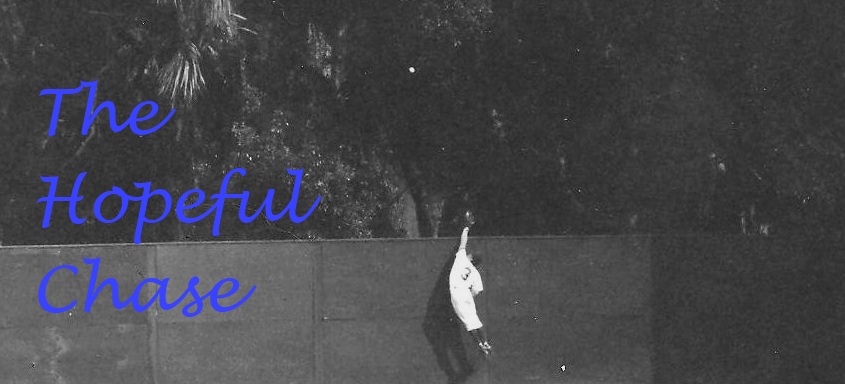Now that my work schedule seems to be stabilizing (yea
working mid-shifts!) it’s time to get back to posting regularly both here and
at my other piece of internet real estate. I plan on easing back in with some
card-related posts, especially since I went a on a little online card buying
binge earlier this week. Before I get to that, however, it’s time to review a
trade I made a couple of months ago.
One of the great things about being active in the online
card community is meeting new people and working out trades with different
people. Sometimes though, it’s nice to be able to put together a trade with a
wily ol’ veteran of the blog-o-sphere.
Back in April Marck from Troll Might Rule aka The Collective
Troll dropped me a note that he needed some of the extra Heritage cards I had
posted. I was glad to send him some and
he mentioned that he had some cards on my want list as well as some “Orioles
styff”. I wasn’t sure if it was a
mistype or an Olde English description of some Glenn Davis cards (cause that
man was a stiff in an Orioles uniform).
Back when I was writing my first attempt at a blog (RIP Wasteland!) there weren’t many folks talking about the Rays on a regular
basis. There was myself, Dave from
Fielder’s Choice and then the prolific Collective Troll. At one point I’m
pretty sure Marck had six different blogs going about different things. We worked out a few deals here and there
before I moved up to Chicago and left the Rays part of my collection behind.
So it was nice to see an envelope in the mail with “The
Collective Troll” on the return label (the Duchess saw the envelope and was
astonished I was getting mail addressed from someone named The Collective Troll
– I think astonished is the word I’m looking for). Anyone who has traded with
the web’s foremost Rays fan/roller derby enthusiast knows he delivers above and
beyond expectations. Along with the
aforementioned want list cards there was plenty of Markaki (including some
customs) and some Ginter action. I’ll
spare you the scans of all the cards (ed. Note – someone is feeling lazy) and
leave you with just one – my favorite card of the package.
.jpg) |
| Second least favorite Orioles hat design |
.jpg) |
| Does anyone know who drew the cartoons on the back of Topps cards? |
That’s no 2012 Heritage, my friends. That’s an honest-to-god
1963 Topps card of former Oriole/White Sox/Red Sox/Royal /Hankyu Brave Jerry
Adair. To be honest, when I first saw the card I was surprised that the Orioles
current pitching coach also played for the team. Then I looked closer and
realized that Jerry Adair isn’t:
1.
A pitcher
2.
Alive
3.
Named Rick Adair
What can I say, I’m getting old, names tend to run together
from time-to-time.
Adair (Jerry that is) was a solid Oriole from the late-50s
to mid-60s. The O’s signed him out of Oklahoma State University in 1958 and
threw him straight into the big leagues.
He would play in the majors sparingly over the next three seasons
spending most of 1959 in Amarillo and 1960 in Miami. By 1961 he had earned a
spot on the big league roster and for the next five seasons he would be a
defensive stalwart in the middle of the O’s infield.
Nicknamed “Casper the Friendly Ghost” Adair was a
smooth-fielding second baseman who could handle himself at the plate (he
averaged .258 in his nine seasons with the O’s). Considered one of the best
defensive second basemen of his era, the Oklahoma native teamed with shortstop
Luis Aparicio to provide one of the best infield duo’s in Baltimore history
(oh, and there was a guy named Brooks Robinson at third).
Unfortunately he wouldn’t be around to enjoy the O’s first
World Series victory in 1966. After manager Hank Bauer announced in spring
training that rookie Davey Johnson would be starting in place of Adair, the
veteran publicly announced that he was bitter about the move and demanded a
trade. Baltimore obliged and in June of that year traded Adair to the White Sox
along with John Riddle for Eddie Fisher. Fisher (the ballplayer not the singer)
would be a key part of the bullpen going 5-3 with 13 saves in 71.2 innings.
Adair’s glove would keep him in the league for another 4
years and when he left the league in 1970 he did it with a .985 career fielding
percentage having made only 58 errors in 3926 chances (I’m pretty sure Mark
Reynolds has 58 errors this week).
Jerry Adair would find some work as a coach before passing
away from liver cancer in 1987 at the age of 50. Cancer hovered like a dark
cloud in Adair’s life. Towards the end of his career, when he was with the
Royals organization, his daughter was struggling with a form of terminal
cancer. Adair had understandably struggled that season and the team cut him in
May. His daughter would die a few weeks later. In 1981 he would also see his
wife pass away from cancer.
Sabr.org has a fascinating bio of Adair on their site,
providing some information of a player that many fans (like myself) might not
be that familiar with.
Many thanks to the Troll.
I’m already putting aside some more Rays cards for you.

No comments:
Post a Comment